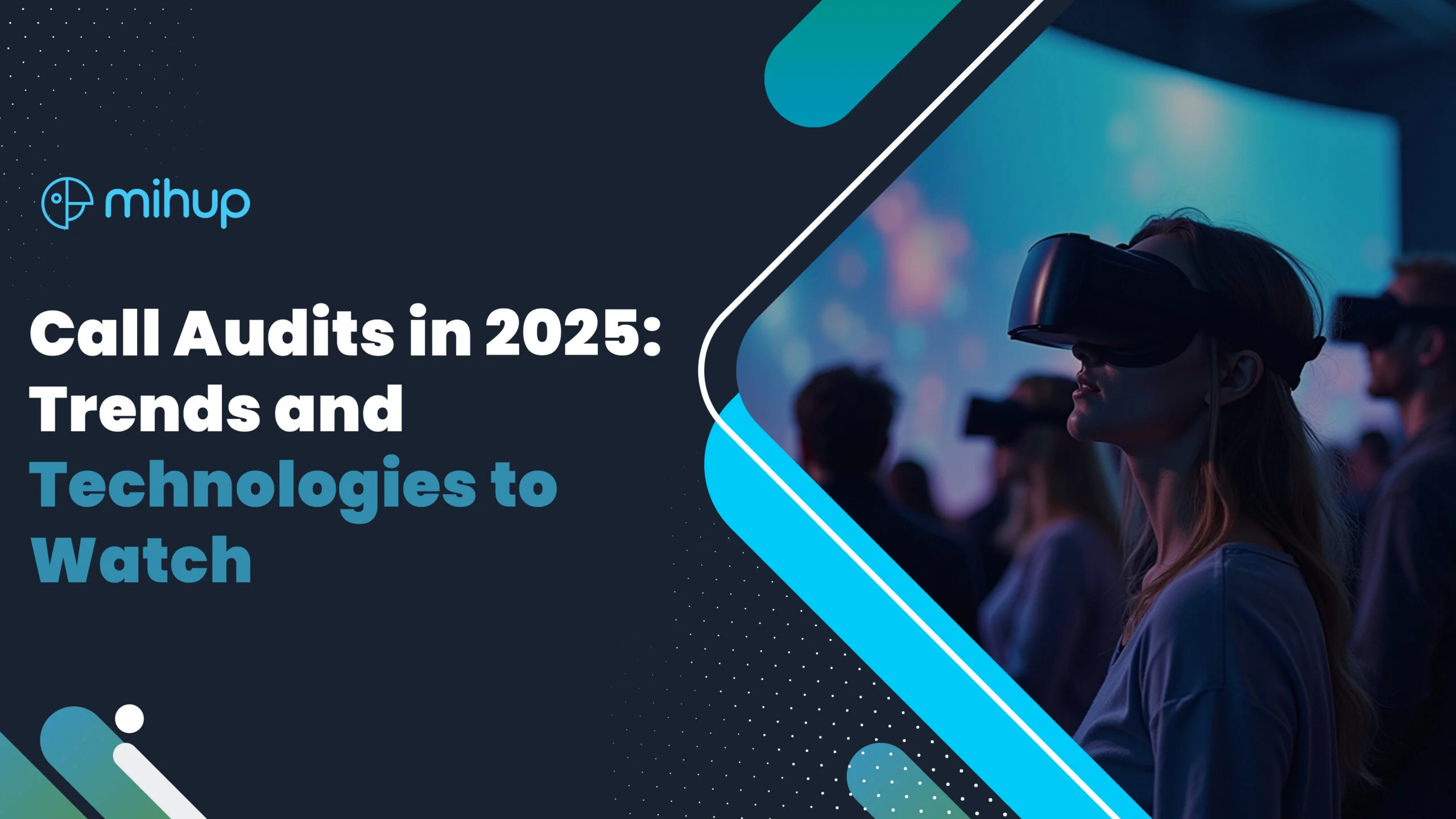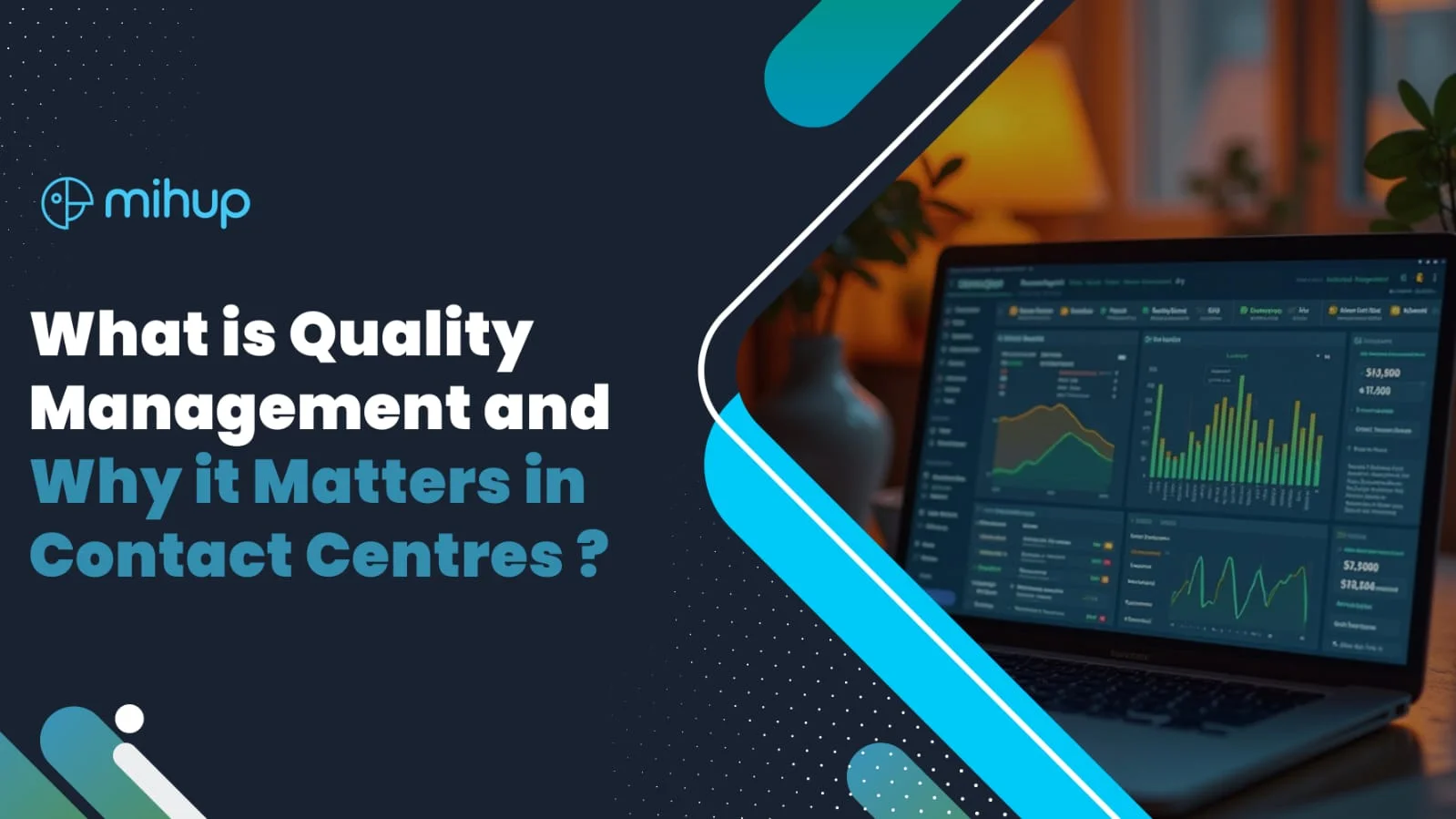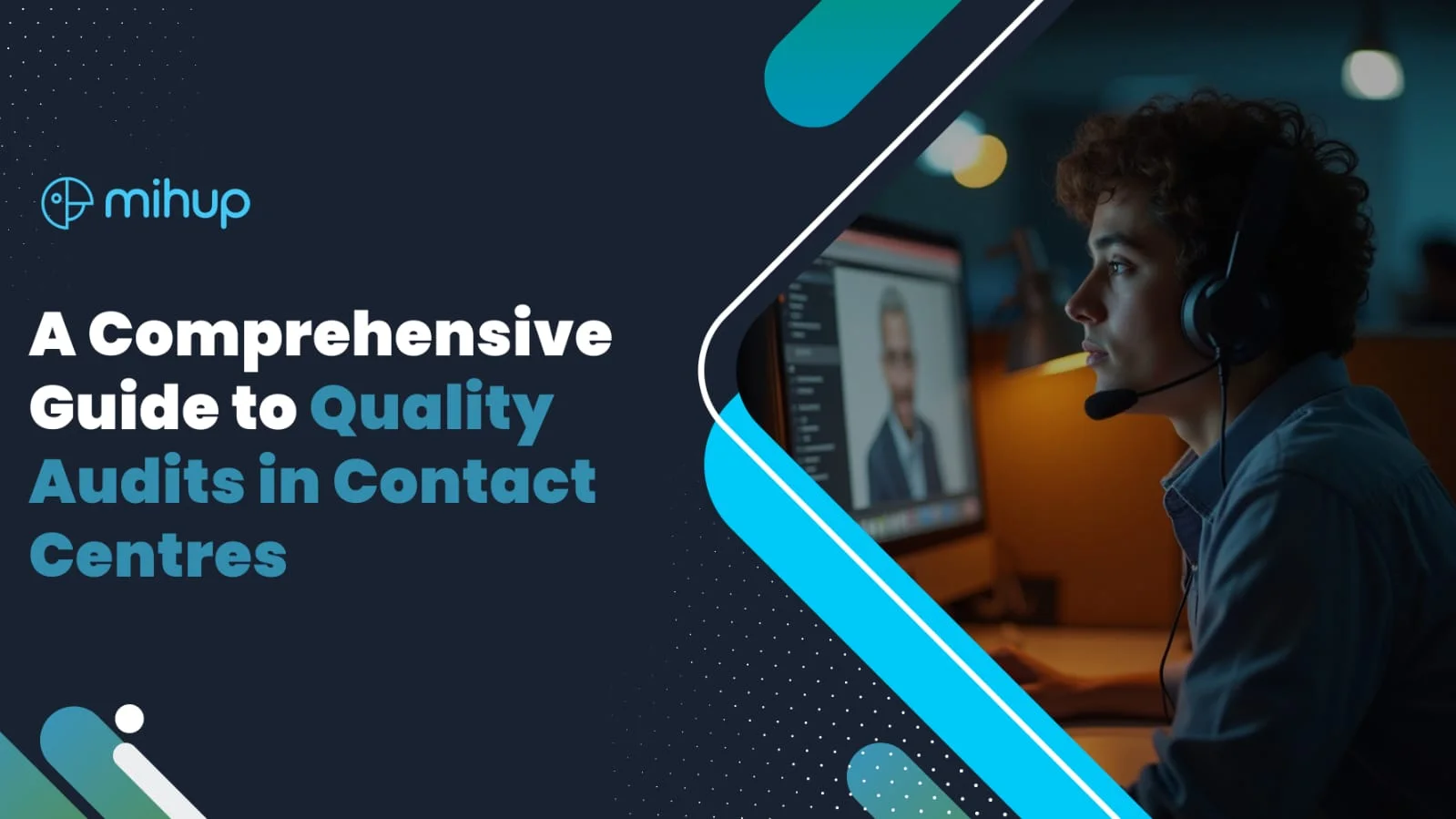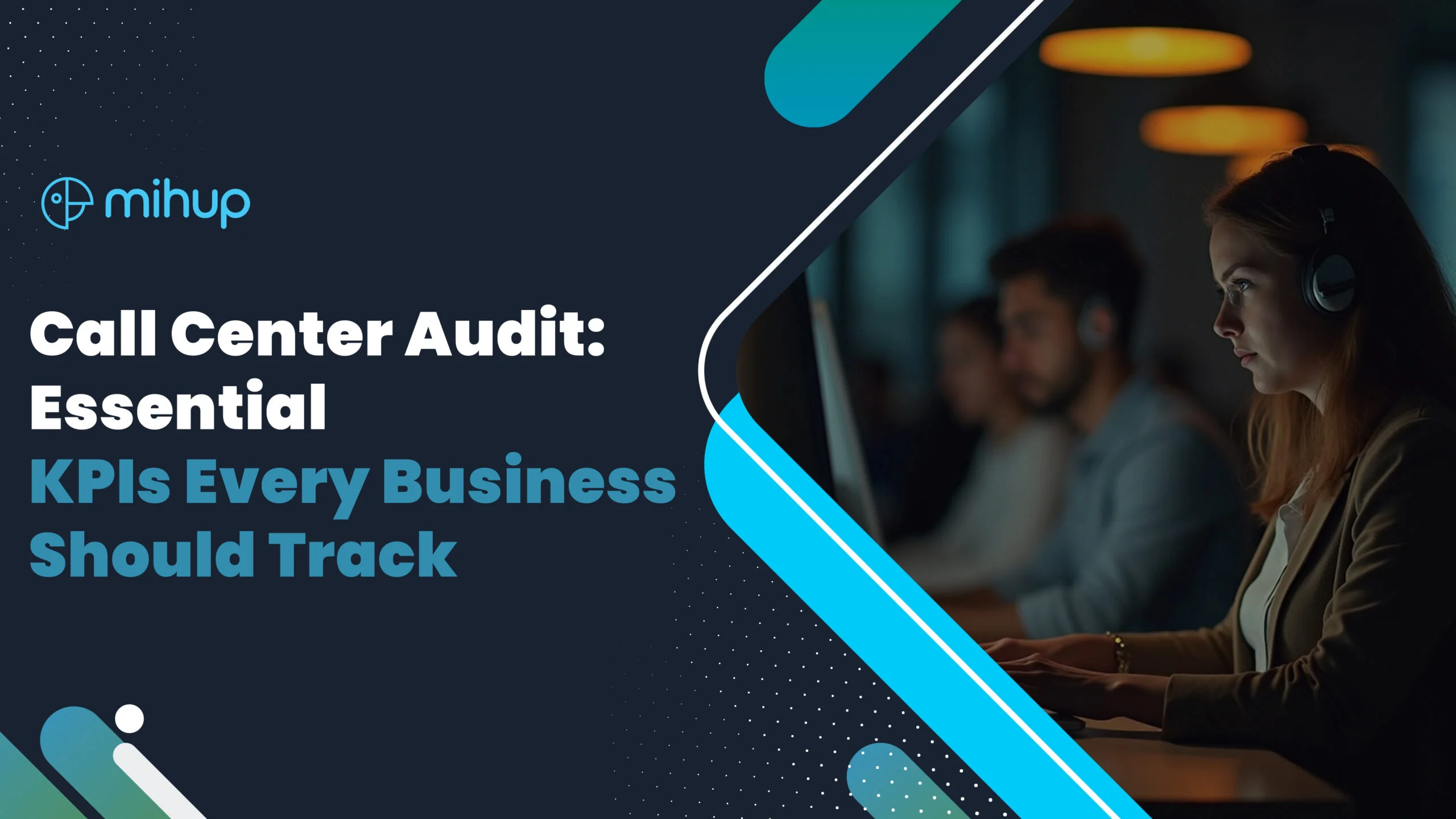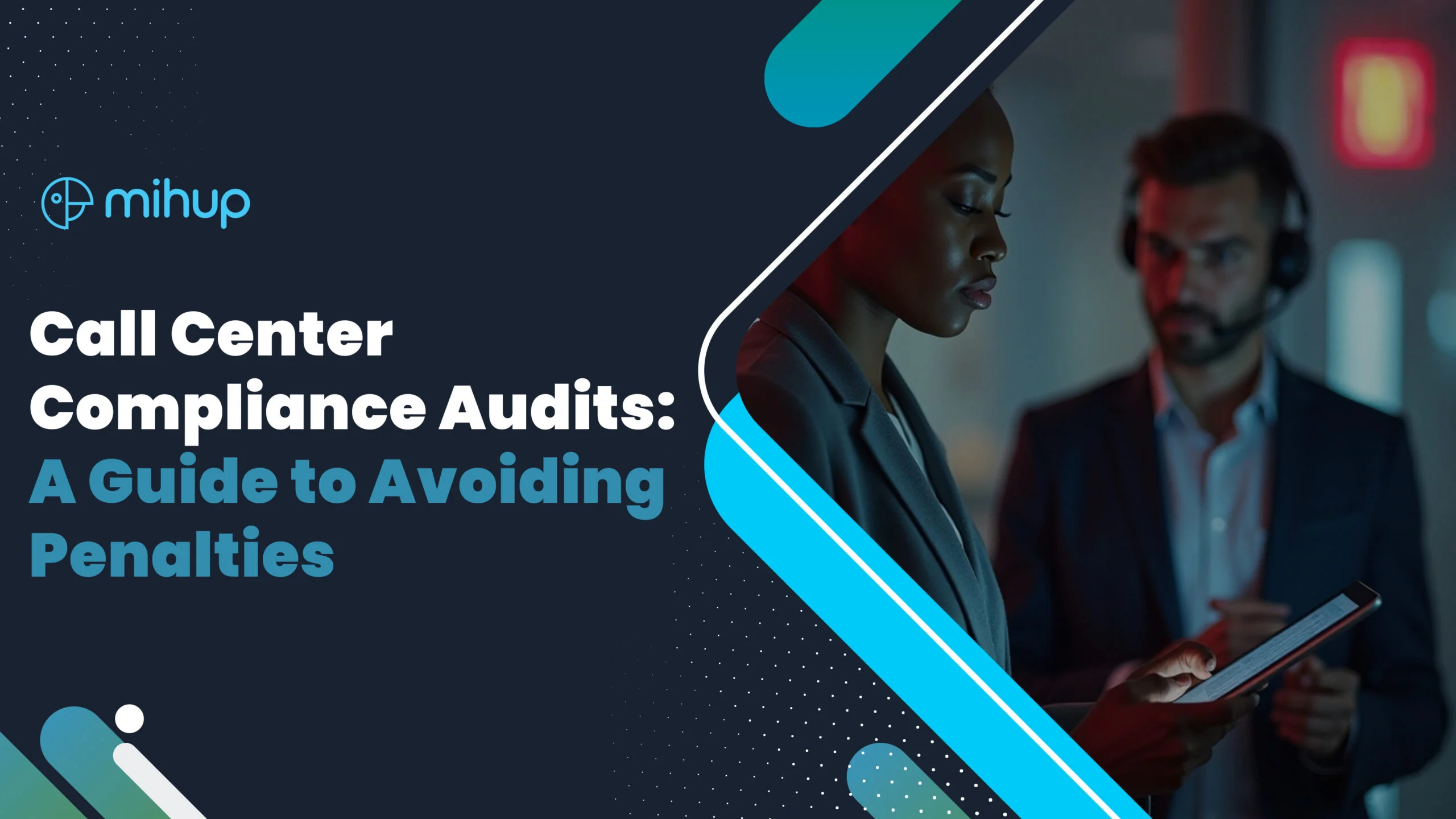In 2025, the call auditing world is changing rapidly as technology evolves along with expectations about compliance and the customer experience. Traditional processes for auditing calls are quickly being replaced by advanced technology systems that are more efficient and accurate. Artificial intelligence (AI), automated workflows, and hybrid communication technologies are now enabling organizations to measure how customers are being interacted with in new ways.
These changes are cultivating new expectations of call audits in 2025. This article outlines each of the trends and technologies to further examine how they are changing call audits to be more efficient, faster, and smarter.
What Is a Call Audit in the Modern Contact Center?
In simple terms, a call audit is a faithful and routine examination of customer-agent communications used for quality, adherence, and improvement purposes. It checks such performance metrics as Average Handle Time (AHT), First Call Resolution (FCR) rate, compliance with regulations, and agent conduct. It also has grown to involve the entire range of customer experiences with a brand, known as omnichannel interactions, which not only cover phone calls but also chat, email, and video, as well as both real-time monitoring and retrospective analysis.
Key Trends Shaping the Future of Call Audits
1. Artificial Intelligence (AI) in Call Audits
Call audit processes have been greatly influenced by AI technology because the latter has introduced data analysis capabilities that have given human auditors a helping hand by some most advanced means that they could never manage to get on their own. Not only are these AI-powered systems capable of processing huge stacks of calls at the same time, but they can also find patterns, carry out differentials, and discover possible compliance issues with incredible precision.
How AI is Changing Call Audits
AI is revolutionizing call audits through:
- Speed: AI analyzes large volumes of calls much faster than human auditors
- Consistency: AI algorithms apply the same criteria to every call, ensuring consistent evaluations
- Objectivity: AI eliminates human biases, leading to fairer assessments
The Role of Natural Language Processing (NLP) in Call Audits
NLP integration enables AI systems to understand context, sentiment, and intent within conversations. This advanced understanding allows for:
- Real-time identification of compliance violations
- Detection of specific keywords indicating risk
- Analysis of customer sentiment and agent performance
- Recognition of unauthorized script deviations
Detecting Fraud with AI Algorithms
Artificial intelligence AI has been successful in detecting any slight changes that might point towards any fraudulent activity. These tools analyze a lot of voice features, such as voice characteristics, background noise, and speech patterns, to detect and block doubtful interactions. A machine learning model becomes increasingly accurate by sorting out information from new data input.
Predicting Compliance Issues with Predictive Analytics
AI also falls under predictive analytics in helping organizations predict compliance issues before they escalate. AI monitors and analyse historic audit data to signal potential high risks and can provide recommendations to prevent issues.
Customizing AI Models for Industry-Specific Compliance
Custom AI models can be trained to recognize industry-specific compliance requirements and regulatory frameworks. The specificity of the models adds an additional layer of protection, ensuring that call audits and all other communication channels maintain compliance and consistency even to the narrowest of industry specific standards.
Improving Accuracy Rates with AI-Driven Call Audits
AI-enhanced call audits have tremendous accuracy improvement rates, with organizations citing up to a 95% reduction in false positives compared to previous methods. Increased accuracy allows quality assurance teams to focus on legitimate compliance issues.
2. Workflow Automation for Faster, Smarter Audits
Automated workflow systems disrupt traditional call audit processes by making entire workflow practices efficient and effective. Today’s automation tools can efficiently and effectively deliver speed and accuracy with consistent results.
Benefits of Workflow Automation in the Audit Process
1. Elimination of Manual Data Collection
Automation eliminates manual call recording, retrieval, and organization. Smart systems automatically capture, categorize, and store call data based on predetermined parameters, ensuring complete data coverage while maintaining organized records.
2. Enhanced Efficiency in Call Analysis
Automated processing brings remarkable efficiency through:
- Real-time transcription services convert conversations into searchable text
- Automated quality scoring based on customizable metrics
- Pattern recognition for identifying recurring issues
- Instant flagging of compliance violations
3. Streamlined Reporting with Customization
Automated reporting gives considerable benefit through customizable dashboards and encourages report distribution on scheduled reports, and managers will receive a detailed overview, reporting all without manual data collection.
4. Time Savings Leading to Improved Business Outcomes
A typical audit process, which can take an organization 4-6 hours manually to complete can be down in minutes with an automated system. The quickness and simplicity of the process allows the organization to review and audit larger volumes of calls and maintain positive accuracy.
5. Seamless Integration with Existing Systems
Automation solutions can connect and integrate into current business systems to enable the movement of information among systems as a seamless flow and enable coordination between companies, fast and real-time collaboration between quality assurance, compliance, and training.
3. Hybrid Communication Solutions for Call Audits
Hybrid communication solutions mark a significant shift in call audit systems for 2025. Organizations can leverage both on-premises infrastructure and cloud capabilities, creating robust and adaptable audit environments.
On-Premises Systems: Control and Compliance
On-premises systems provide direct control over data and infrastructure, ensuring compliance with strict security protocols and regulatory requirements. These systems excel in handling sensitive information and maintaining data sovereignty.
Cloud Infrastructure: Advantages in the Audit Process
Cloud infrastructure brings advantages, including:
- Rapid scalability for call volume fluctuations
- Geographic flexibility for multi-location access
- Cost optimization through pay-as-you-go models
- Automatic updates for new features and security patches
The Power of Hybrid Solutions
The hybrid approach allows organizations to maintain existing on-premises investments while gradually transitioning to cloud-based solutions. This strategic balance enables businesses to scale audit capabilities without compromising security or performance.
4. Evolving Unified Communications Technologies
Modern unified communications technologies are making it easier to monitor and review calls. SIP trunking consolidation allows businesses to simplify communication systems while tracking important call information.
How Modern SIP Trunking Solutions Help with Audits
Modern SIP trunking solutions create centralized routing systems that capture and log calls across multiple locations and departments, providing:
- Real-time visibility into call patterns
- Detailed records of routing decisions
- Instant access to historical communication data
- Compliance tracking across geographical boundaries
The Impact of Multichannel Communication Platforms
Multichannel communication platforms integrate voice calls, video conferences, chat sessions, and social media interactions into a single, auditable ecosystem.
Intelligent Routing for Compliance
Advanced UC technologies offer intelligent routing capabilities that automatically direct calls based on predefined compliance rules and audit requirements.
Dynamic Audit Protocols Across Channels
Organizations can implement dynamic audit protocols that adapt to different communication channels while maintaining consistent compliance standards across customer interactions.
Predictive Analytics for Audit Planning
UC technologies integrated with AI enable predictive analytics for audit planning. These systems identify communication patterns, flag potential compliance risks, and suggest optimal audit timing based on historical patterns.
5. Advanced Fraud Detection Tools for Regulatory Compliance
Regulatory compliance requires advanced fraud detection abilities. AI-driven tools now identify and prevent fraudulent activities during call audits more effectively than ever, analyzing speech patterns, emotional indicators, and contextual data.
How Advanced Fraud Detection Systems Work
Advanced systems employ multiple techniques:
- Natural Language Processing (NLP): Identifies specific keywords indicating fraudulent behavior
- Voice Pattern Analysis: Detects signs of stress or deception through voice characteristics
- Behavioral Analytics: Identifies unusual call handling patterns
- Contextual Risk Assessment: Evaluates transaction-related discussions for risk levels
Benefits of AI-Powered Fraud Detection Tools
AI-powered tools can:
- Identify irregularities in financial discussions
- Detect unauthorized disclosures
- Spot non-compliant sales practices
- Learn from past data to recognize new fraud patterns
Detailed Audit Trails and Instant Alerts
Advanced fraud detection tools create comprehensive violation records with timestamps and severity ratings. High-risk conversations trigger immediate notifications, allowing auditors to take prompt action.
What’s Next? The Future Outlook for Call Audits
The future of call auditing will be all about forward-looking analysis, generative AI, and hyper-personalized coaching, as the systems will not only flag issues, provide real-time resolutions, recommend training modules based on agent behavior, and generate summaries automatically for quality assurance groups, customer experience, and compliance will converge, and call audits will be central to providing seamless, secure, and high-quality interactions. Organizations that treat audits as strategic capabilities will create trusted relationships with customers and operational excellence.
Mihup.ai: Powering the Next Generation of Call Audits
Mihup.ai is actively participating in the transformation of contact center operations through the use of advanced conversational intelligence. Our platform provides, among many other things, real-time compliance monitoring in multiple languages, and customizable audit workflows which can easily be expanded with the progress of your business.
If you are in the sectors of banking, financial services, insurance, telecommunications, or healthcare, our platform is the perfect choice for you. It enables your quality assurance (QA) team to identify non-compliant behavior, monitor the interactions of mis-selling and disclosure adherence, and observe agent-customer dynamics at a faster rate. To dive into the platform, request to see a demo. This way, you will gain a better understanding of how Mihup.ai can modernize your call audit and convert your customer service department into a one-stop compliance station.
Conclusion
In 2025, call audits will not just be a back-office checkbox, but the foremost weapon against risk and the motivator of quality. With AI, automation, and unified communications moving the wave, businesses can now audit smartly, quicker, and more effectively.
What is the outcome? Compliance has been improved, customers are happier and business results are more positive. This is the time to start using these technologies and define an audit strategy that is future-ready and result-driven.
